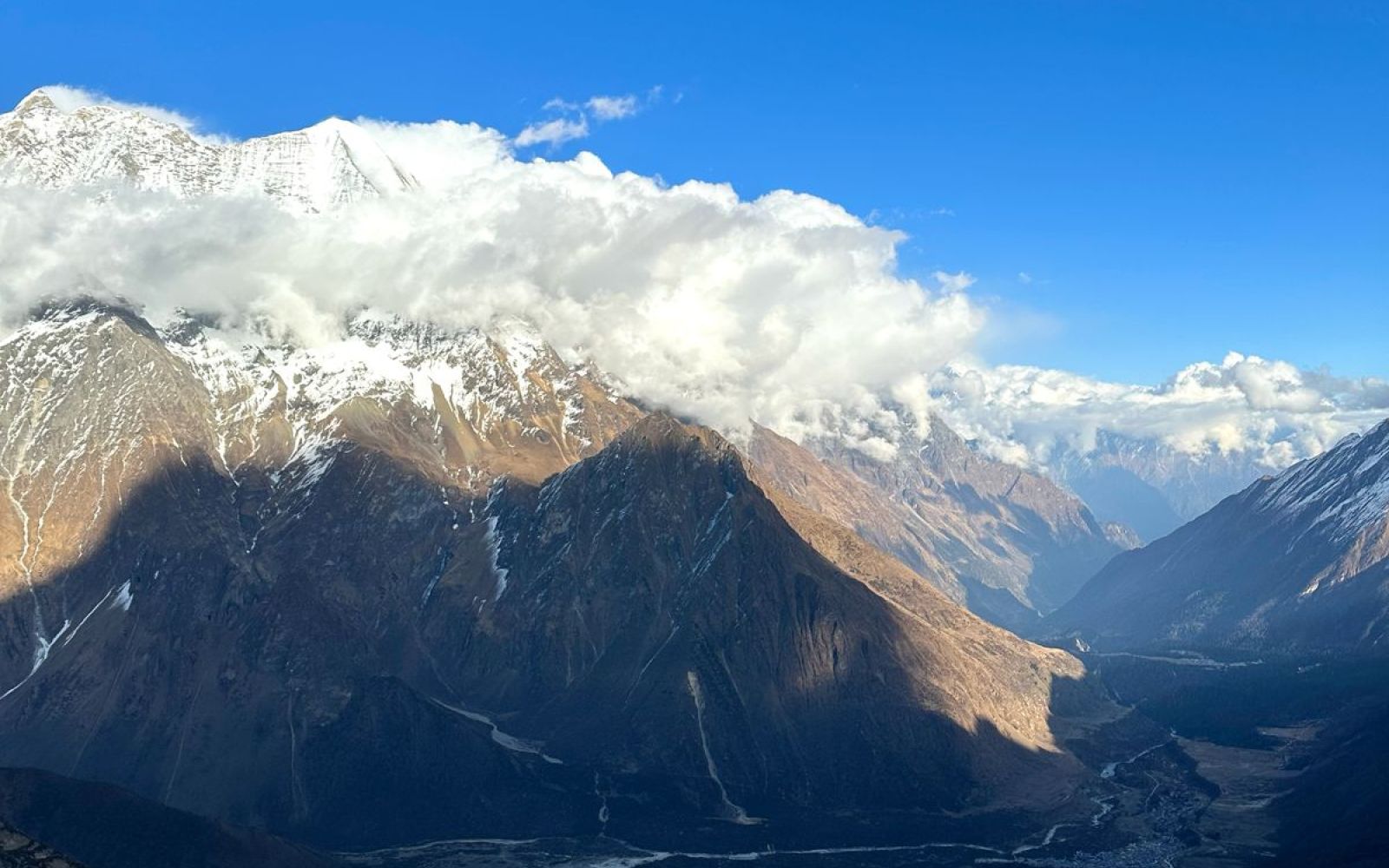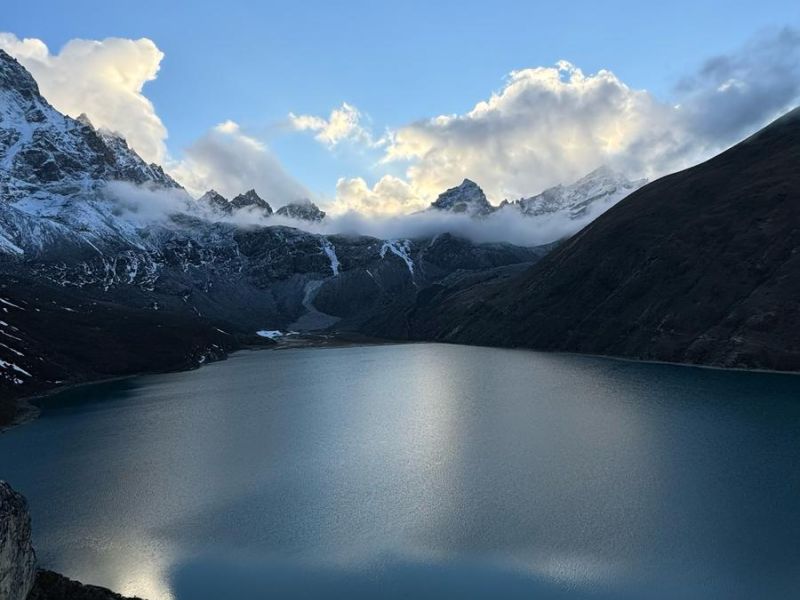July 8, 2025
Great Himalayan Trail (GHT)

Embark on the Great Himalayan Trail (GHT)
Imagine traversing one of the most breathtaking and adventurous trekking routes in the world—the Great Himalayan Trail (GHT). Stretching across the majestic Himalayan mountain range, this epic journey takes you through the heart of Nepal, India, Bhutan, and Tibet, challenging both your physical limits and immersing you in rich, vibrant cultures along the way.
Two Routes, Endless Adventures
The GHT offers trekkers two unforgettable experiences:
– The High Route: For the adventurous spirit, this technically challenging path weaves through the highest and most remote areas of the Himalayas. Prepare to conquer rugged terrains and high-altitude passes that push you to your limits.
– The Lower Route: If you’re seeking breathtaking views without the extreme altitude, this accessible trail meanders through serene valleys, bustling villages, and lush forests, providing ample opportunities to connect with the local culture.
Explore the Diverse Geography of the GHT
While the GHT stretches across five countries, Nepal stands out as the most popular destination for trekkers, thanks to its stunning landscapes and welcoming trails.
– Nepal: Covering around 1,200 kilometers, this section spans from east to west, inviting adventurers through iconic regions like Annapurna, Dhaulagiri, Langtang, and the spectacular Everest area.
– India: Journey into the Indian states of Himachal Pradesh and Uttarakhand, where you’ll find captivating views of peaks like Nanda Devi, framed by the vibrant culture of the region.
– Bhutan: Immerse yourself in the unique enchantment of Bhutan’s eastern Himalayas, where you can explore sacred monasteries and breathtaking, less-traveled landscapes.
– Tibet: Finally, set your sights on Tibet, a less-frequented section that offers immense natural beauty, albeit with political and logistical challenges.
Cultural Treasures Await on the GHT
Prepare to be amazed by the rich tapestry of cultures you’ll encounter on your trek. In Nepal, you’ll meet diverse communities like the Sherpa, Tamang, Gurung, and many more, each sharing their unique traditions and languages. In Bhutan, the captivating Dzongkha culture and awe-inspiring fortresses will take your breath away, while in Tibet, the spirit of Tibetan Buddhism and the stark beauty of the Tibetan Plateau will leave a lasting impression.
Majestic Mountains and Awe-Inspiring Wildlife
The GHT leads you amidst some of the world’s highest peaks, including the Annapurnas, Kanchenjunga, and Dhaulagiri, where towering giants like Everest and Lhotse reign supreme. Each turn reveals valleys dotted with glaciers and adorned with snow-capped summits—a true paradise for mountain lovers.
As you travel, keep an eye out for the breathtaking wildlife residing in national parks and conservation areas like Langtang and Sagarmatha. You might spot elusive snow leopards, playful red pandas, or colorful pheasants soaring through the skies.
Conquer High Passes and Embrace the Challenge
The thrill of the GHT lies in its high-altitude passes, some exceeding 5,000 meters (16,404 feet). Notable crossings like Tashi Labsta Pass(5,755m), Thorong La Pass (5,416m), French Pass (5,360m), Sherpani Col(6,135m), Amphu Laptsa Pass(5,845m), Lumba Sumba Pass (5,178 m), Cho La Pass(5,300m), Renjo La Pass(5,240,), Tilman Pass(5,308m), and Larke Pass(5,106m), demand determination and skill, while the stunning views make every effort worthwhile.
For those seeking a challenge, the High Route often requires technical abilities such as glacier navigation and rocky scrambles, demanding careful preparation and resilience. The Lower Route offers a gentler experience, yet remains a captivating adventure through rugged terrains.
Unforgettable Sections of the GHT (Nepal)
The Nepal section of the GHT beckons with its breathtaking beauty and diverse landscapes.
– Western Nepal (Far West) – Humla and Rara Lake: This off-the-beaten-path expedition invites you through charming remote villages and lush forests, culminating at Rara Lake, the largest in Nepal.
– Annapurna Region (Central Nepal): Here, the Lower Route enchants with its verdant Gurung villages and tranquil valleys, while the High Route reveals the rugged grandeur of Dhaulagiri Base Camp and majestic views of the Annapurnas.
– Langtang and Helambu Regions: Famous for its Tibetan-influenced culture and stunning alpine meadows, Langtang Valley beckons trekkers with panoramic vistas of peaks like Langtang Lirung (7,227m) and the mesmerizing Gosaikunda lakes.
– Exploring the Solukhumbu Region: The Gateway to Everest: Prepare to embark on an unforgettable journey through one of the most iconic regions of the Great Himalayan Trail (GHT) — the Solukhumbu. This area is home to the famed trek to Everest Base Camp, where every step offers breathtaking vistas of towering giants like Mount Everest, Lhotse, Makalu, and Nuptse.
As you navigate the mesmerizing Khumbu Valley, you’ll pass through lively Sherpa villages such as Namche Bazaar, Tengboche, and Pheriche, each rich with culture and hospitality. A must-visit is Kala Patthar, a vantage point that promises one of the most dazzling perspectives of Everest, especially at sunrise when the first light kisses the mountain’s peak.
– Journey to Kanchenjunga: Nature’s Hidden Gem: Venture east to the remote beauty of Kanchenjunga, one of the most biologically diverse areas in Nepal and home to the world’s third-highest mountain. The trek through this stunning section of the GHT leads you to Kanchenjunga Base Camp, a pivotal highlight that immerses you in the raw splendor of the Himalayas. Here, the views are nothing short of spectacular, showcasing the majestic peaks that tower above.
Navigating the GHT: What You Need to Know.
Permits: A Trekker’s Essentials
Trekking the GHT isn’t just about packing your bags; it involves obtaining various permits, especially in national parks and conservation areas. Be prepared with your TIMS (Trekkers’ Information Management System), ACAP (Annapurna Conservation Area Permit), and the Sagarmatha National Park Permit for the Everest region. If you’re headed into restricted zones like Upper Dolpo, Upper Mustang or Kanchenjunga, remember to secure special permits in advance.
Timing Your Adventure
The ideal times to embark on the GHT trek are during the pre-monsoon (March to May) and post-monsoon (September to November) seasons. Avoiding the monsoon months (June to August) is wise due to heavy rainfall and potential landslides. Winter months (December to February) can bring harsh cold and snow, particularly at higher altitudes, making trekking hazardous.
Accommodation: Where to Rest Your Weary Feet
Along the trail, accommodation varies widely. In the busy circuits, you’ll find welcoming teahouses, while in more remote areas, basic camping is the norm. In high-altitude zones, expect fewer teahouses, so consider carrying your own camping gear for those nights under the stars.
Logistical Support: Guiding Your Journey
While some trekkers prefer to navigate solo, hiring guides and porters is highly recommended, especially for the more remote or challenging stretches. For the High Route, where technical skills come into play, experienced guides with mountaineering backgrounds can make a significant difference.
Challenges to Embrace
As you set out on this epic journey, be mindful of the challenges that await:
– Altitude Sickness: The heights of the GHT can pose a risk of altitude sickness. Trekking at a measured pace and incorporating regular rest days will help you acclimatize.
– Remoteness: Many segments of the GHT are isolated, demanding self-sufficiency for extended periods. Resupply options are limited, so come prepared.
– Physical Endurance: This trek is not for the faint of heart. Prepare for several days of challenging trekking, often lasting 6-10 hours over rugged terrain.
Embarking on the GHT is not just a hike; it’s an adventure of a lifetime that immerses you in nature’s grandeur and tests your limits. Are you ready to take on the challenge?
See More Stories


